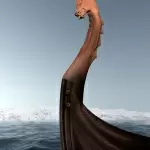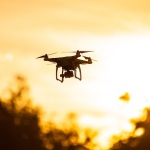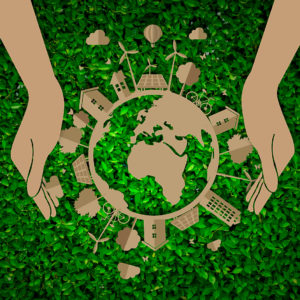
Ecology is an environmental science in its most literal sense - the study of environments and the entities within it.
Although closely associated with environmentalism and conservation today, it does not necessarily follow; an ecology can also be human gut flora, how the elements of an urban environment function, and the ecology of soil nutrient cycles.
The word “ecology” comes from the Greek and means “house study” or “living relations study”. That essentially defines what it is - the study of relationships between those who occupy a home.
Introduction to Ecology - What It Is, What it Isn't
Ecology studies organic life, examining such elements as spatial distribution (local or general) abundance and their relationship with the environment. This includes their interaction with other organisms within that environment - essentially their “interrelatedness” as a functioning network (1, p25).
It's considered a form of environmentalism and it is usually associated with these sciences, but it also includes aspects of biology, botany, zoology, genetics, bacteriology, chemistry and physics. Ecology is about biodiversity in a given environment. It has as much in common with physiology, behavioral sciences and the evolutionary sciences as it has with environmental sciences (2) in concerning time and space.
Its main areas include:
- The processes that make up biological life including adaptation
- Distribution, abundance and spatial concentration, and biodiversity
- How and why ecosystems begin or are changed when subject to external pressures
- Changes to and movement of, energy and materials through an ecosystem. Some ecosystems can change quickly while some remain constant over longer periods
This means an ecological study can include anything from bacterial cells (3), to gut flora, through to how many generations of aphids can populate a plant, all the way up to how deserts form and maintain a constant balance, and the impact of rainforests and ice fields on the Earth's natural processes or are impacted by planetary fluctuations (2).
Learn more about how to become an ecologist.
A History of Ecology
Antiquity to 1900
“Ecology” is a far broader term than we perceive. As already discussed, despite being closely associated with environmental sciences, the philosophy of relationships between biological systems (the actual definition of ecology) can apply almost anywhere. The philosophy behind the various and sometimes disparate sciences emerged in the late 19th century out of the growing interest in natural sciences - botany, zoology, and environmentalism mostly. Some argue that awareness of species and their relationships began with Aristotle, although his writings on the matter are largely lost. Aristotle's student Theophrastus (4) described relationships between plants and animals but this was from a philosophical rather than a scientific perspective.
The first true ecological study as we would understand it is arguably the Park Grass Experiment which began in 1856 (5) and to date in 2018, is ongoing. Around 150 papers have been published on the study and it has contributed to many major areas, beginning with agriculture and evolving with time to answer new and increasingly complex questions about biodiversity and evolution, the ecological impact of humans on landscapes, and the wider changing environment. Two of Charles Darwin's contemporaries also made their own contributions. His friend Alfred Russell Wallace looked at the geography of animal species (6). There was a growing movement within the biological sciences that recognized how species did not exist in a bubble - that they were dependent on each other.
The second contemporary was Johannes Eugenius Warming. For the first time, the scientific community started to consider the importance of environmental factors on the biological systems within it. Specifically, Warming looked at the results of fire, temperature and other abiotic influences. Warming is now considered to have created Botanical Geography (known also as biogeography and today as a division of ecology) (7) and contributed greatly to the modern discipline. It was also during the late 19th and early 20th century that researchers began to finally understand the massive environmental impact of 19th-century imperialist actions such as deforestation and the concerns over upsetting the environmental imbalance of the industrial revolution.
20th Century to The Modern Era
Ecology became a true discipline in the 20th century following some late 19th century developments. This was when the term “biosphere” was coined and the recognition of the strict chemical balances required for life to evolve and sustain itself was identified. Once understood, and the importance of balance realized in any biological system, ecology quickly applied to sciences other than those concerned with the environment. Vladimir I. Vernadsky, a Russian geologist who defected to France around the time of the Russian Revolution, wrote extensively about the biosphere in the aptly titled study The Biosphere published in 1926 (8). He did not coin the term. That honor goes to a fellow geologist by the name of Eduard Suess, an Austrian, in 1875. The concept of the idea of our planet and the biological systems within it making up part of a whole was born.
To some, ecology did not start truly until Arthur Tansley coined the term “ecosystem” (9). It was adopted by a number of other disciplines and taught in top academic institutions in a wide range of biological sciences. Tansley's important work was in presenting ecology as a philosophy. This alone perhaps permitted its adoption into the theories of many scientific disciplines. Also in the early part of the 20th century, American botanist Henry Chandler Cowles effectively founded the concept of "dynamic ecology". Studying the Indiana Dunes at the south side of Lake Michigan, he identified evidence of vegetation and soil change over large time periods (10). His work demonstrated how environmental influences change a landscape; unlike his contemporary botanists, he was largely interested in landscape change as an influencer of botanical profiles.
Tansley's and Cowles' work broadened the scope of ecology. Also, in the first half of the century, Charles Elton began animal ecology, but the real breakthrough was the work of British-born ecologist G. Evelyn Hutchinson and his work across New England. Under his work, ecology became an applied science as well as theoretical (11). His work impacted many subdisciplines including biogeochemistry (the impact of geological, biological and chemical actions on the environment), entomology (insects), genetics, limnology (inland water bodies), and population dynamics theory.
The Sub-Disciplines of Ecology
As already discussed, despite its strong associations with environmental studies, ecology is simply an umbrella term. There are many subdisciplines, some of which pertain to the environment, some of which do not.
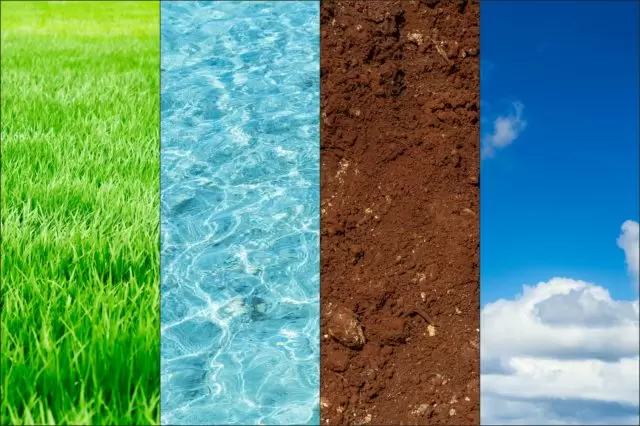
Applied Ecology
This is one area where ecology applies to the environment. It's an applied science where practitioners use ecological principles to identify and solve problems in the real world, examining challenges for the economy and human impact (12). The attempt to balance effective land use with conservation. Typical examples include agricultural management also known as agroecology, using interdisciplinary approach including genetics, animal and plant biology, conservation biology within the landscape, and environmental management. The aim of this discipline is to examine the impact of humanity on the landscape and various topographies and attempt to encourage better use so the landscape and wildlife are not damaged.
Biogeochemistry
This fuses environment with physics and the effect of biological materials on global chemistry and vice versa. It's largely concerned with the natural physical cycles of energy and matter on our planet (11), seeking to understand chemical reactions and the balance with biological life. Through this subdiscipline of ecology, the chemical elements of nitrogen, oxygen and carbon and their interactions in all levels of the natural environment from the lithosphere (the hard outer shell of the planet) through the biosphere (the level at which life exists and can survive) to the highest level of the atmosphere and their importance for planetary ecology.
Biogeography
This area of ecology has an overlap with evolutionary biology as it concerns the study of species - particularly their geographic distribution. The distribution study of species and their related ecosystems cover geological time (so it can apply to paleontology) and geography (so it can be environmental biology and evolutionary biology). It seeks to answer questions concerning why biological species thrive in one ecological system but not in another, the effects of environmental change on species distribution on migration, contraction and spread. It's a true multidisciplinary study, adopting elements of the environment, climate, biology, geology and evolution (13).
Chemical Ecology
This niche area examines the use of chemicals in an environment (14). This is not about pesticides or human impact, but how biological species use chemicals. It examines chemicals as defense mechanisms for example, the purposes of capsicum in chili plants as a defense, the use of sprays by skunks against predator attack, in using pheromones and other chemical substances to attract mates and mark boundaries, but also in digestive systems of animals and carnivorous plants. Biological life uses chemistry in remarkable ways; this area also looks at the impact of those chemicals on the environment.
Community Ecology
Another aspect of ecology that overlaps with biological systems and their relationships looks at how communities of species react to and interact with each other, predators and prey and other species (15). It can apply to human communities and the dynamics of social groups; it can equally apply to the rigid hierarchies of animal species such as wolves and meerkats, symbiotic relationships, co-operation between unrelated species. It is a great lens through which to view biodiversity in any ecosystem or planetary biodiversity. Biologically, it may also look at coevolution (the process by which species actions in an environment affect and influence one another) (16).
Conservation Ecology
This is the area most people think of when they hear the word “ecology” but it is only a small part of the larger umbrella term. It is, however, increasingly vital to our understanding of conservation issues, species protection and risk mitigation. Those who work in conservation ecology examine how we might change practices when working in an environment to mitigate the risk of the extinction of a species that relies on that environment to survive. They work closely with or sometimes as conservation biologists, but ecologists are more concerned with the impact of the environment, biodiversity and natural resources as a whole, rather than treating a species and its problems as existing in a bubble (17).
Ecophysiology
Also known as environmental physiology or physiological ecology, it concerns the effects of the environment on a species' physiology. In this way, it has some overlap with evolutionary biology by looking at abiological processes, specifically environmental forcings and adaptation, rather than natural drift, and comparative physiology by attempting to explain what environmental impacts may have led to genetic drift between closely related similar species living in slightly different environments. Charles Darwin examined the finches of the Galapagos Islands which were physiologically distinct but still the same species (18). In humans, the study has been used to explain the reason for the great variation in human skin color, largely considered due to levels of sunshine.
Ecotoxicology
This small but growing area of ecology examines the ecological role of toxic materials on biological systems - on individuals, species, communities and biosphere levels. The effects of pollution on life and the environment is an ongoing problem. But rather than looking at pollution from a medical perspective, they examine broad and long-term problems for the environment - both local and large-scale level. Past studies in ecotoxicology that led to the Clean Air Act and the Environmental Protection Agency, to protect biodiversity. Rachel Carson, a marine biologist and conservationist, writer of Silent Spring in 1962, is credited with starting this area of study, separating it from the medical study of toxins (19).
Evolutionary Ecology (Also Known as Ecoevolution)
Fusing biology and evolution with ecology, this area of study considers the environmental forcings that affect species evolution. This can include a sudden change in temperature or weather variance, the presence and profile of vegetation in an area to which some of the population has migrated, the impact of predators and prey species and population pressures. It considers evolution within a community at an individual level and studies what aspects may impact the community. Each individual has a specific set of needs, creating competition which plays off against Darwin's survival of the fittest in terms of species (20).
Fire Ecology
To many, wildfires are a natural disaster on which governments spend millions tackling and controlling. Ecologically speaking, there are vital for regenerating those ecological systems that they destroy. Fire ecologists examine the Earth's relationship with fire in natural habitats, how they start and end, why they start in certain areas, frequency and intensity and the area's ecological history with wildfire (21).
Functional Ecology
This area considers the pragmatic aspects of ecology - the part that certain species play in the broader ecology. Examples include predator and prey interactions, the study of the roles or functions, dependence and interdependence, that certain species (or groups thereof) play in an ecosystem to maintain balance within the system. Modern problems that they might study would include the removal of wildflowers vital to bee population, destruction of habitats vital to prey species that will, in turn, damage predator numbers (22).
Global Ecology
This is the study of the entire planet as an ecosystem and the micro and macro parts that comprise it. Our planet is a complex system where events in one area can have either local, regional or planet-wide knock-on effects. Global ecology understands the impacts that weather systems, species migration, pollution, natural events and any other localized issues can have on the other side of the planet, not a series of isolated events. It addresses the macroecological questions such as the effects of large natural disasters, global climate change and ocean acidification (23). In the 21st century, many of its practitioners examine the human impact on the global ecology.
Human Ecology
Humans are one of the most successful species ever to have evolved on this planet. No species has changed the habitat quite in the way that we have changed it. Human ecology is an interdisciplinary approach looking at the ecological impact on the environment, biodiversity, species and adaptation of human life covering our 200,000 years of existence. It is defined as the study of humanity's ecological dominance (deforestation for agriculture, urbanization and other changes), crossbreeding of animal and plant species and the impact that has on natural environments, and interactivity with environments - modification and adaptation.
Landscape Ecology
It is only relatively recently that we have come to understand the ecology of individual landscapes. This area of ecology examines the interactions between separate, discrete and disparate elements within a single landscape type as well as its structure, composition and functions within a wider ecology. How a landscape is defined is not always clear, but through the lens of landscape ecology, it is a system containing a specific ecological pattern. It can be a mountain range or a single hill within a wetland. It can be a freshwater floodplain and its relationship with the river or lake that runs through it (24).
Macroecology
Between landscape ecology and global ecology, this is the study of large-scale ecological phenomena that cover multiple geographic locations but are not large enough to be considered global. An example of this is continent-wide impacts of effects of a large volcanic explosion. The after effects of the Eyjafjallajökull eruption in 2010 caused severe delays to air traffic across Western Europe which had knock-on effects for American citizens wanting to cross the Atlantic to Europe and vice versa. The eruption caused disruption across a limited but important area of the northern hemisphere. The ecological problems that this caused are macroecological.
Marine Ecology and Aquatic Ecology
The interest of the ecology of water and aquatic landscapes, marine life, their relationships and interactions - both abiotic and biotic factors. Experts in this area will look at biological life at the biochemical, cellular, individual, and community. Marine ecosystems are also of interest, including the marine environment as a biosphere as well as external pressure from weather systems, and dry land ecosystems and pressure. Some examine marine geology and geography and the impact of underwater landscape on life and chemical processes (25).
Microbial Ecology
Microorganisms are vital to all life and defined as those too small to be seen by the naked eye, requiring a microscope. Specifically, microbial ecology examines the interactions, ecological needs and relationships of three lifeforms: Archaea (single cell organisms without a nucleus), Eukaryota (single or multi cell organisms with a nucleus), Bacteria and Viruses. These lifeforms exist in every ecosystem in the biosphere; no area is untouched from the deepest oceans to the highest mountains. They represent some of the oldest forms of planetary life. Understanding how they evolved and became other lifeforms could answer many questions about biological life.
Paleoecology
Landscapes change over time, sometimes through natural processes such as glacier increase or retreat. Such events in the past can have cataclysmic and fundamental changes to ecologies of all sizes, including the biological organisms that live there. It studies changes to the landscape over geological timeframes and examines extinct animals and plants (locally extinct and globally), including potential ecological reasons for that extinction, and at natural changes in the land that could have led to change in the biodiversity - immigrant and emigrant species (26).
Population Ecology
Population pressure is often just one aspect of each subdivision of ecology, but population ecology is concerned with understanding and predicting the dynamics of the spatiotemporal relationship of a single species within an ecological zone. It considers the impact that population numbers will have on an environment (27). An imbalance of predator-prey relationships where population numbers are unsustainable due to too little prey (the predators will go elsewhere, possibly permanently) or too few predators (the population of the prey species becomes uncontrollable and eats more plant life than is sustainable). Both are damaging to the environment. This can also apply to human populations, examining the impact of numbers of an ecologically-sensitive environment.

Quantitative Ecology
Mathematics as an ecological tool has already been discussed in population ecology (above) but statistics and mathematical principles can also apply elsewhere in ecology. This is the area of study that concerns hard data and numbers in understanding an ecological profile. The arrival of Big Data has permitted the growth of this (still) small area. In future, it is expected to answer to spatial, demographic and distribution questions (28) as well as attempt to shed light on population problems in marginal areas, at certain times of the year or during certain weather conditions.
Restoration Ecology
This is a subdivision of ecology that examines damage to a landscape and tries to work out what steps are required to restore it. The damage could be the result of human action (such as an oil spill) or natural (volcanic eruption, earthquake, flooding). Recent studies have shown concerted efforts to restore a landscape can lead to a reduction in forestry extinction rates (29). In the arid western states of the US, ongoing efforts in this area are succeeding in combating invasive weed species (30). The subfield has been around since the 1980s though humans have attempted to restore and maintain habitats for thousands of years.
Soil Ecology
Soil is a fascinating ecosystem in itself; vital for plant life upon which the entire food chain is dependent, soils - including the biological life (bacteria, viruses, fungi, protozoa, algae) that live in soil and the abiological processes that are part of it, including the nutrient cycle, acidity, hydration and the decomposition of organic material. This is now a separate area of study due to how reliant life is on soils, nutrients and its water content.
Theoretical Ecology
Just as most areas of science have practical or applied sides, there is also a theoretical aspect too. Ecology is no different. Ecological theory is the development of universal theories to underpin all of ecology regardless of the nature of the ecosystem. Professionals working in this area define ecological theory with statistics and other mathematical models but increasingly computer modeling, data analysis and computer simulations.
Urban Ecology
Urbanism is a small part of the human time frame, but urban environments are complex ecologies requiring separate study. Today, around 50% of the human population lives in urban centers and that is only set to grow. They have already had an enormous impact on the environment and are self-contained environments with their own ecological processes and systems. Urban ecology examines the urban environment, not just in the towns and cities as living units, but the networks required to link them together. It is also the study of urban ecological systems from the organic life that exists within it - humans and other species that have made a home too such as rodents and pests, bird species and associated biodiversity (31).
The Future of Ecology
Ecology and its various subdisciplines are entering both a challenging and exciting time. Some challenges are accelerating while new technologies could help practitioners streamline processes and aid decision-making for politicians while improving public awareness.
The Challenges of Ecology
The first and biggest challenge is in conservation ecology. Increasing species extinction due to human-induced climate change is just one factor. Already, we are seeing the impact of average temperature rises on the global ecology (32). Ecological studies are taking place across the developed world to attempt to examine what sort of impacts further temperature rises might have or is having on localized, regional and global ecologies. International agreements continue to be made and acted on to reduce carbon emissions targets. We know that ocean acidification is damaging aquatic ecologies, damaging coral and affecting biological life that depends on those ecosystems. We expect ecology and ecologists to remain at the forefront of understanding these ongoing problems and offering solutions.
Biodiversity is also a major challenge. As land clearance in ecologically sensitive areas makes way for farmland or urban landscapes, this affects the species that comprise this landscape. Loss of habitat without provision for conservation can create major imbalances between predators and their prey (33), removing vital food sources for herbivorous and carnivorous species. Urban environments are increasingly looking to improve biodiversity within their own environments (34); urban centers need not necessarily be ecologically damaging. Indeed, many of them are not - although by accident rather than design. The deliberate planting of oak trees encourages caterpillars and songbirds in an urban area of Maryland that previously had few oak trees. It's important that urban designers and architects are made aware of and continue to promote biodiversity and enhance survival opportunities for the species that are being displaced or those that have already made a home in our urban landscapes.
Ecological damage in the developing is another cause for concern. As previously poor countries improve their economies, livelihoods, lifestyles and global economic power (35), developers are cutting down natural landscapes to make way for urban centers, factories, road network and infrastructure. Balancing these economic needs against the global ecology is expected to be a major discussion point in both international trade and climate agreements.
Access to water, water security and scarcity in coping with all of the above is likely to underpin many of our ecological problems. In the last few years, we have seen drought and wildfire in California - water shortages and excess heat exacerbate the capacity for wildfires, but this is not just a problem for arid areas during the hot season. Temperate areas are seeing faster drainage of water supplies too. Encouraging humans to use less water while population grows is vital to regional and global ecology.
Learn more about how to become an ecologist.
Emerging Technologies and Advances in Ecology
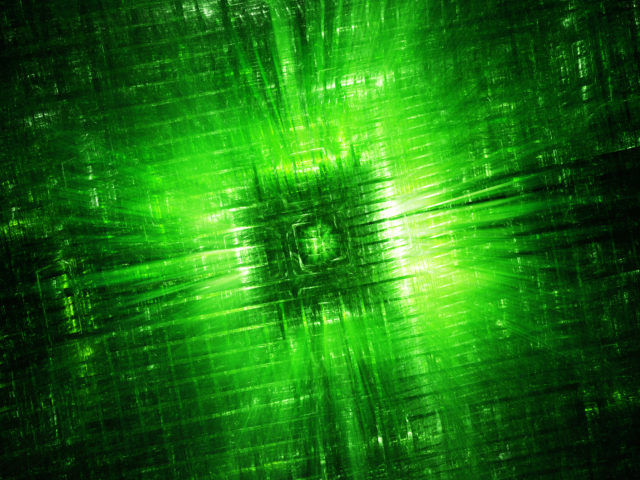
New technologies, some unrelated to ecology but undoubtedly useful to it, could see fundamental changes to how some of these subdisciplines work with their collected data and how it may be used for a professional or general audience, and for politicians wishing to balance ecological need without hindering progress or advancement. Existing challenges are still at the forefront of the community. The first and most obvious is the advent of Big Data. We've largely heard about the commercial uses of this but already it's being used in scientific applications for local, regional and global ecological issues. The Long Term Ecological Research Network established in 1980, for example, makes available four decades of data sets from long-term and large-scale ecological issues. Big Data and Cloud access mean more than ever before, researchers can access, examine and present findings more thoroughly and faster than ever before (36).
Conservation ecology has also benefited from the cheap and available technology of geographic information systems (GIS) which allows geographic big data sets to be plotted into maps, used in databases, presented and manipulated to show almost any required information. Graphic data has the benefit of presenting digestible information to non-experts including politicians, business decision makers and even the average person for whom masses of mathematical data and statistical analyses is confusing. GIS and global tracking can help researchers examine environmental changes and plot movement of species and individual biological entities. Couple this with the relative cheapness and less intrusive aspect of modern remote sensing (37).
Slightly related again is the advent of “citizen science” and crowdsourced data. This is a symptom of Big Data, not a cause, and is likely to provide useful to researchers wishing to communicate with people in areas that are beyond their resources to access. This data is useful through sheer volume that would be almost impossible for even a small team to acquire and beyond their resources to do so (38).
Sources
- Laferrière, E & Stoett, P.J. 1999: International Relations Theory and Ecological Thought. London: Routledge
- http://environment-ecology.com/what-is-ecology/205-what-is-ecology.html
- https://www.ncbi.nlm.nih.gov/pmc/articles/PMC1389233/
- https://www.jstor.org/stable/3984460?seq=1
- https://archive.org/details/bub_gb_HmqtZfTfQUMC
- http://plants.jstor.org/stable/10.5555/al.ap.person.bm000009099
- http://www-ssg.sr.unh.edu/preceptorial/Summaries_2004/Vernadsky_Pap_ITru.html
- https://www.newphytologist.org/trust/tansley/ecology
- https://www.lib.uchicago.edu/projects/centcat/fac/facch14_01.html
- https://news.yale.edu/2015/11/21/ecology-evolution-climate-change-g-evelyn-hutchinson-and-founding-modern-ecology
- http://www.oxfordbibliographies.com/view/document/obo-9780199830060/obo-9780199830060-0039.xml
- https://www.whoi.edu/main/topic/biogeochemistry
- https://www.ncbs.res.in/ChemicalEcology/WhatIsChemicalEcology
- http://www.pnas.org/content/112/16/4915.full
- http://ecology.ucdavis.edu/programs/conservationecology.html
- http://eu.earthwatch.org/Expeditions/Darwins-Finches-and-Natural-Selection-in-the-Galapagos
- https://www.st-andrews.ac.uk/envhist/pdfs/env-toxicology.pdf
- http://www.sciencemag.org/careers/2005/12/evolutionary-ecology-locally-and-globally
- http://www.pacificbio.org/initiatives/fire/fire_ecology.html
- https://www.eolss.net/sample-chapters/C09/E6-70-06.pdf
- https://www.umass.edu/landeco/about/landeco.pdf
- http://marinebio.org/oceans/marine-ecology/
- https://link.springer.com/referenceworkentry/10.1007%2F1-4020-4494-1_250
- https://web.archive.org/web/20051104081736/http://www.uoguelph.ca/zoology/courses/BIOL3130/wells11.pdf
- http://www.pnas.org/content/114/36/9635
- https://www.sciencedirect.com/science/article/pii/S0301479709003004
- https://pub.epsilon.slu.se/3988/1/Artikel_1.pdf
- https://news.ncsu.edu/2015/07/future-of-ecology-2015/
- https://www.nature.com/scitable/knowledge/library/dynamics-of-predation-13229468/
- http://e360.yale.edu/features/urban_nature_how_to_foster_biodiversity_in_worlds_cities
- https://lternet.edu/
- http://www.cell.com/trends/ecology-evolution/abstract/S0169-5347(15)00212-8
- https://datascience.nih.gov/DataQualityandUtility
- Guide to Parasitology - November 19, 2018
- Deserts as Ecosystems and Why They Need Protecting - November 19, 2018
- Conservation: History and Future - September 14, 2018
Related Articles
Featured Article

Environmental Microbiology & GIS



